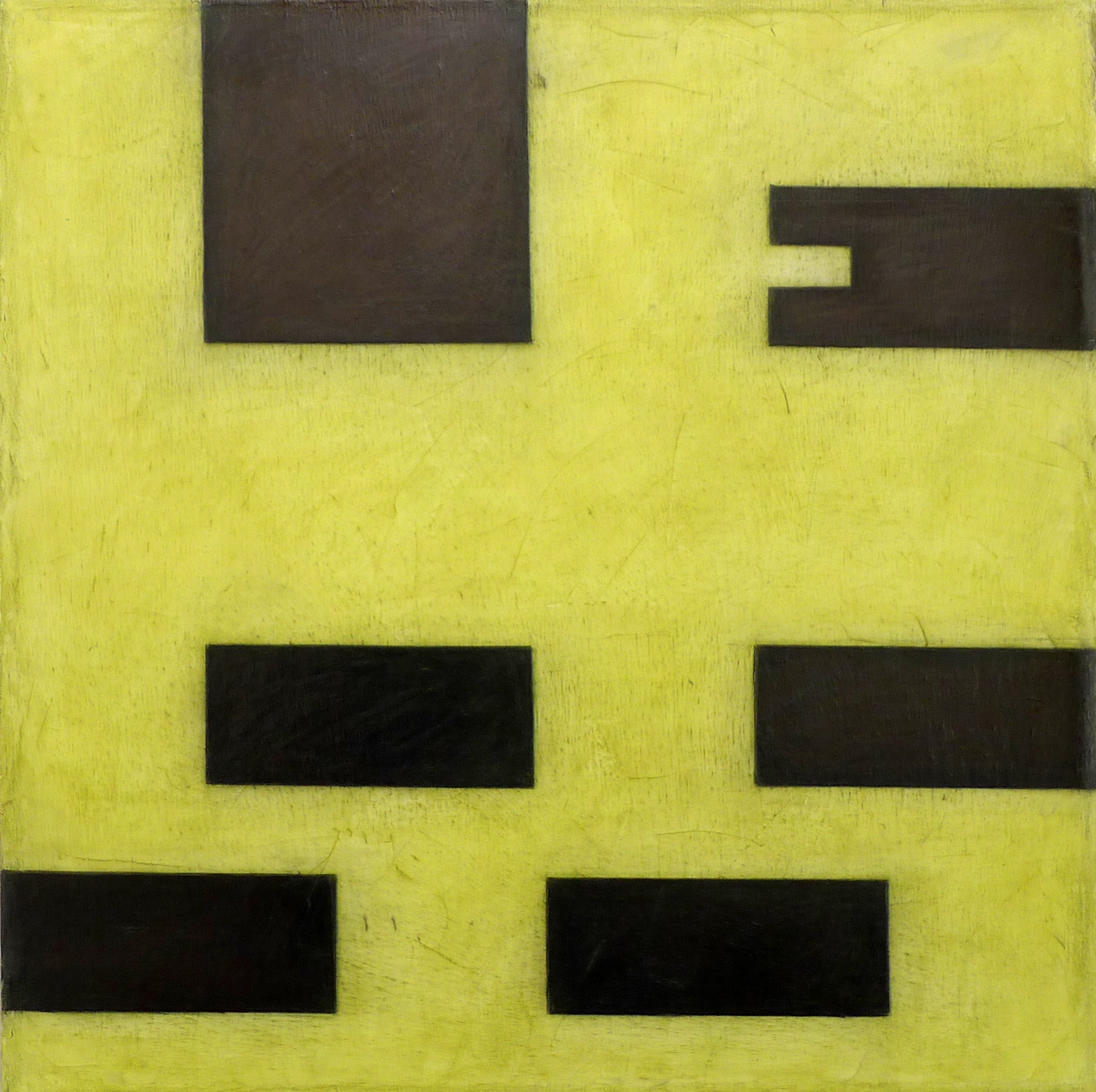Project Description
Allan Graham: Why is Reality a Word?
“Form is emptiness; emptiness is form.”
Prajna Paramita Hridaya Sutra (the Heart Sutra)
“In all the language the verb ‘to be’ is irregular, hence metaphysics.”
Georg Lichenberg
“As Real as Thinking.”
Robert Creeley
In one conversation with the poet John Yau, Allan Graham remarked, “I’ve always had this attitude that art is like throwing a sheet over the ghost, and it didn’t matter to me what the shape was. The ghost was what I was after.i” Later in the same conversation Graham continued, “When I started reading Zen poetry, someone asked, “Are you a Buddhist?” and I said, “The best way to be a Buddhist is to not to be a Buddhist.ii”
The first time I saw Graham’s painting “YOU ARE HERE,” which was leaning casually against the middle of the main wall in the living room of his home in the outskirts of Santa Fe, iii I completely forgot, at least for a good three or four minutes, that I was actually there visiting him at his home. The painting preoccupied my mind, reminding me that I am here. Its title runs up against all four edges of the off-square canvas, fills the whole surface of the canvas emphatically, physically, with presence infused by eloquence related to its spatial distributions as well as its acoustic sound. At risk was my sense of orientation that shifted between meaning boldly conveyed—I AM HERE—and the words painted: “YOU ARE HERE.” After a prolonged inquisitiveness as to how it was made—one or two layers of oil ground atop several coats of acrylic gesso, applied with a palette knife to achieve the desired sheen, then forcefully rubbed with soft 6B graphite sticks, endlessly, to reach a significant degree of density and uniformity—I discovered the reciprocal relationship between the positive space that spells out the commanding words, and the negative space, which more or less is left emptied, untouched except that its accumulation of patinas that are indicative of the trials and errors attempted in the making-process. The smoky, blank spaces endowed remarkable, yet quiet energy to the aura of the piece.
“YOU ARE HERE” seems to have achieved a new synthesis of the distance the fundamental vocabulary of cubist and constructivist geometry, particularly with typographic forms and the interplay of semiotic ambiguity, can extend into poetic intuition, far removed from all of popular culture’s seductive references such as advertisements, billboard signs, etc… Likewise, the commitment to a belief in language’s capacity to sustain and support invention beyond chance operation is upheld. The artist divides the six letters of “YOU” and “ARE” equally into a grid of six not quite squares that inhabit two-third of the canvas. Just below, the four letters of “HERE” lie within four equal rectangles. Within this unequal sizing of the letters, their normal configurations are manipulated into subtle and not-so-subtle distortions required to generate rhythm, discontinuity, and repetition within similarity and differences against the rigid and stable framework of the grid. It is indeed because of the tempered asymmetry of each letter that occupies each slight rectangular space within the grid, which as a whole generates an enticing balance of bilateral and translatory symmetry with a perfect pitch of asymmetrical treatment in between.
While Graham has little in common with other language-based artists such as Joseph Kosuth, Lawrence Weiner, Mel Bochner to some extend, Christopher Wool’s word paintings seems—however opposite they may appear in terms of intention and choice of medium and technique—amplify Graham’s particular perspective: Graham’s lyrical warmth vs. Wool’s irony; the use of graphite on canvas vs. enamel on aluminum; hand drawn vs. stenciling, all of which ultimately evoke the former’s interest in forms pushing inward through hermetic leaning and esoteric tendencies, the latter’s invested in forms pushing outward through, as Jean Baudrillard famously declared, “simulacra et simulation.” Both Graham and Wool also share the mutual attraction to black and white, which evokes many intrinsic American issues such as race that have been obsessively explored in the literature of Melville, Faulkner, or, as the art historian Katy Siegel wrote, explored in a visual sense by how “seeing America in terms of black and white refers to the way in which the early settlers wrote about America as having a shockingly harsh climate, bleaker and snowy. A whiteness that linked America to Antarctica and the North Pole became a symbolic image running from Melville to Saul Below.iv” She continues, pointing out that “there is also the sense of black and white in the strong sun of the Southwest, blinding light and deep shadow, for a lot of artists and poets from Georgia O’Keefe to Charles Olson,v” to whom Graham can readily be identified with, and whose work is in opposition to “the grittiness, filthiness, or sootiness in contrast to neon light that are all revealed in film noir,” that can be seen in the works of Willem de Kooning, Claes Oldenburg, Lee Bontecue, as well as Wool. A good example of such differences and simplicities is visible in the comparison of Graham’s “YOU ARE HERE” and Wool’s “YOU MAKE ME” (1997)vi. The explicit loudness and
assertive presence of Wool’s “YOU MAKE ME,” the words spoken, give way to an initial recognition of the uneven spacing and the mechanical use of stenciling within the visual field, creating a fairly quick and succinct read, whereas in Graham’s “YOU ARE HERE,” slow, eccentric moving lines drawn by hand, that certainly have required several revisions, form each word’s letter into similar yet distinct shapes: Graham’s specificity encourages the viewer’s eyes to follow the edge’s unpredictable curves and straight lines while noticing the highly abstract negative spaces interlacing throughout the painting. Each of the negative spaces between the letters is legitimately arresting as abstraction, visible from multiple orientations. Perhaps, from this particular reading, these shapes sustain the viewing experience, pinning subtle power into the visual perception. “YOU ARE HERE” seems to first evoke the concept of a sign, as it is neither a thing nor a name, but a concept; with the sound of the word arrives the image of yourself or surroundings in one specific position, here.
The sound-image, a psychological imprint, segues into the relationship between the signifier and the signified. These two elements are interdependent, as the principle of change is based on the principle of continuity; therefore as language “YOU ARE HERE” is superfluous—the viewer has no choice but to be here. The sound-image of YOU ARE HERE, the signifier, is revealed in time while the meaning of being here, the signified, is susceptible to the environment and context, and contingent on how each viewer responds to his or her viewing experience.
In Ferdinand de Saussure’s concept of language, where words are not simple vocal labels or communicational adjuncts but the collective products of social interaction and essential instruments central to human life. Or language being a series of ‘negative’ values where each sign eludes to a divergence of meanings between signs leaves behind form without emptiness and emptiness without form. Hence form is emptiness and emptiness is form. In Graham’s recent paintings such as “HOLE,” “WITH,” “ICON,” “MIND,” “MOON,” the abstract element has intensified, as if readability has nearly been obliterated. As Graham pushes his language out of the context of sign, what is left on the surface of his paintings is his thinking, gradually materialized through an inward realm. Outwardly, it is dissolving. Initially dmund Leach’s conjecture that language is a ‘conceptual grid,’ which we impose on the world in order to make sense, was apt for Graham’s forms, yet as the language becomes no longer legible, these works constantly shift their signifier-signified relationship. The resulting deference to many potential meanings that had been tied to the word as a sign, have then to be regained by the narrow space in-between signs, where every viewer is entitled to loose his or her sense of space and time. In fact, from the partial, fragmentary, and contingent image, the total viewing experience overcomes the arbitrary isolation of the boundary of the painting. In these new paintings Graham offers “YOU ARE HERE” as a reminder of why his reality is a word, and then sets out a new ideal, with scrupulous precision, of the world bonded by simple elementary components, yet open, unbounded, and capable of metamorphosing words into image-signs.
Phong Bui
Download the original PDF document written by Phong Bui; Why Is Reality A Word?
You Are Here, 6’ x 5’, graphite, oil, canvas
Icon, 6’ x 5’, graphite, oil, canvas
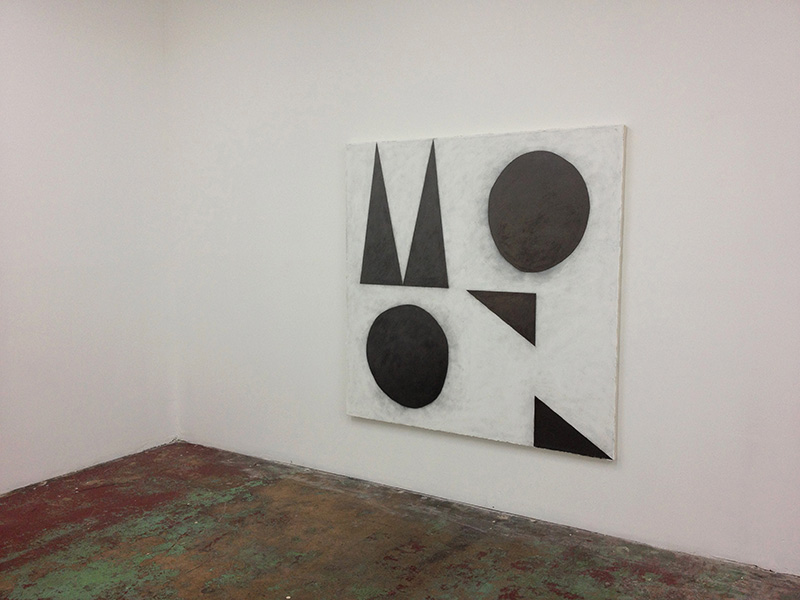
Moon, 5’ x 5’, graphite, oil, canvas

Space Takes a Trip.Calm, 1’ x 20’, graphite, oil, canvas, Private Collection
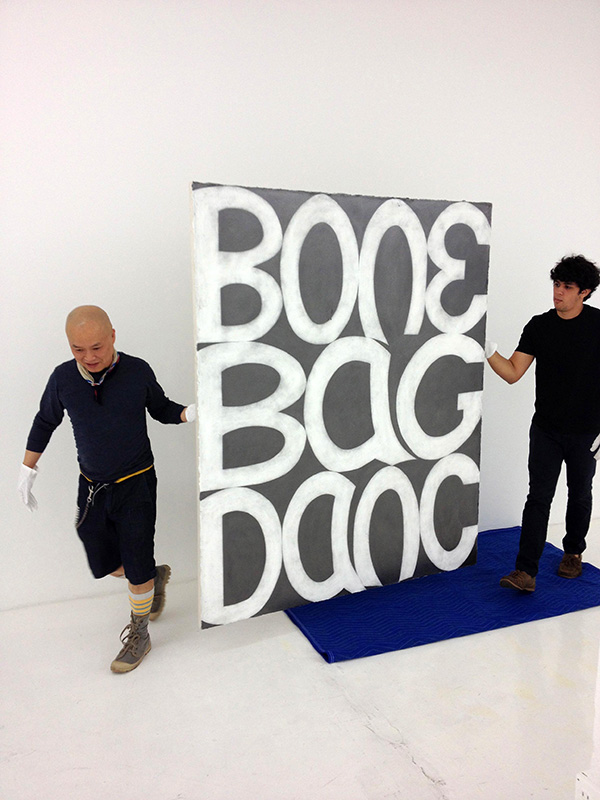
Bone Bag Dance, 6’ x 5’, graphite, oil, canvas (not available)
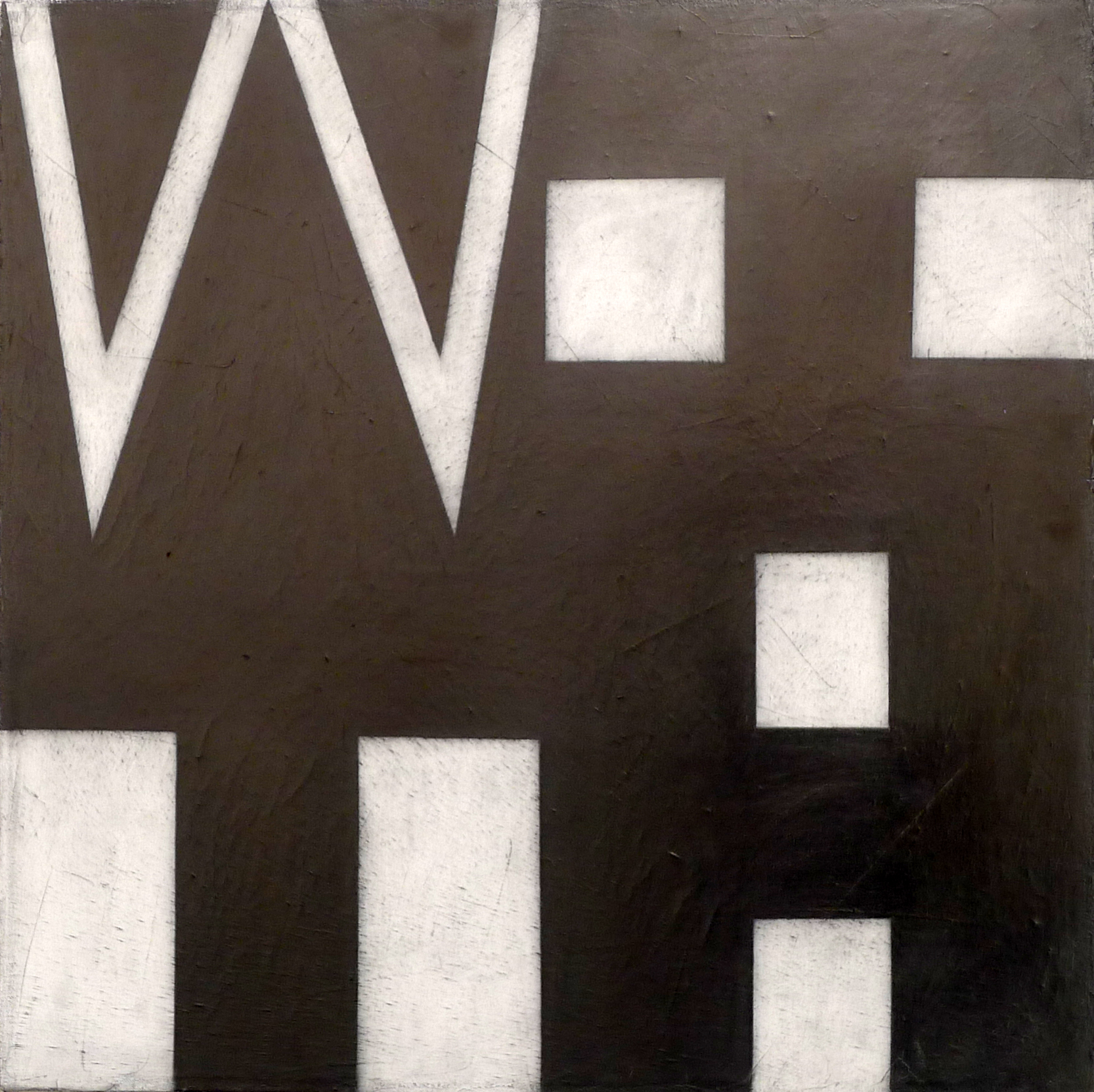
With, 2013, 24” x 24”, graphite, oil, canvas
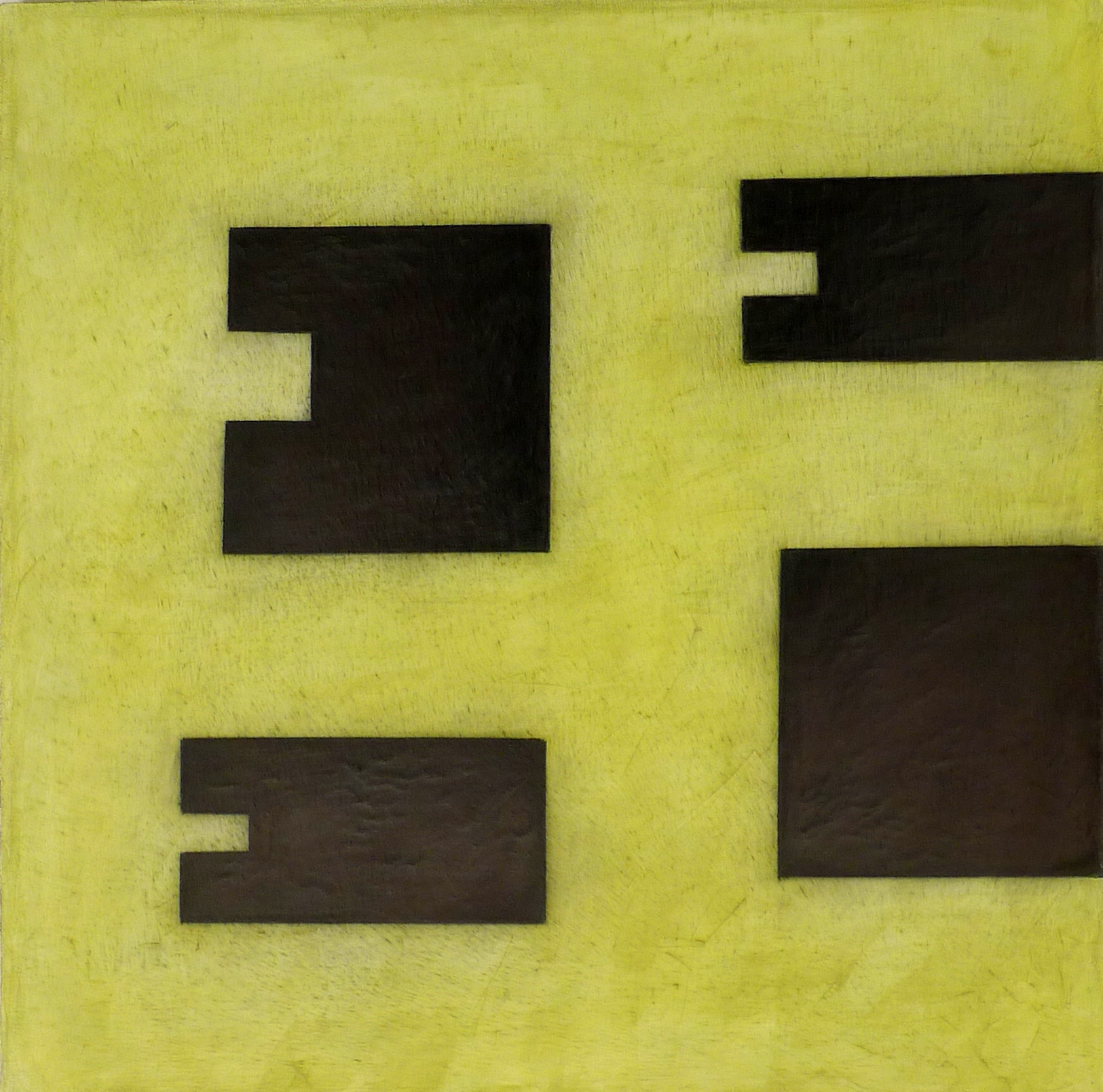
Feel, 2001, 24” x 24”, graphite, oil, canvas
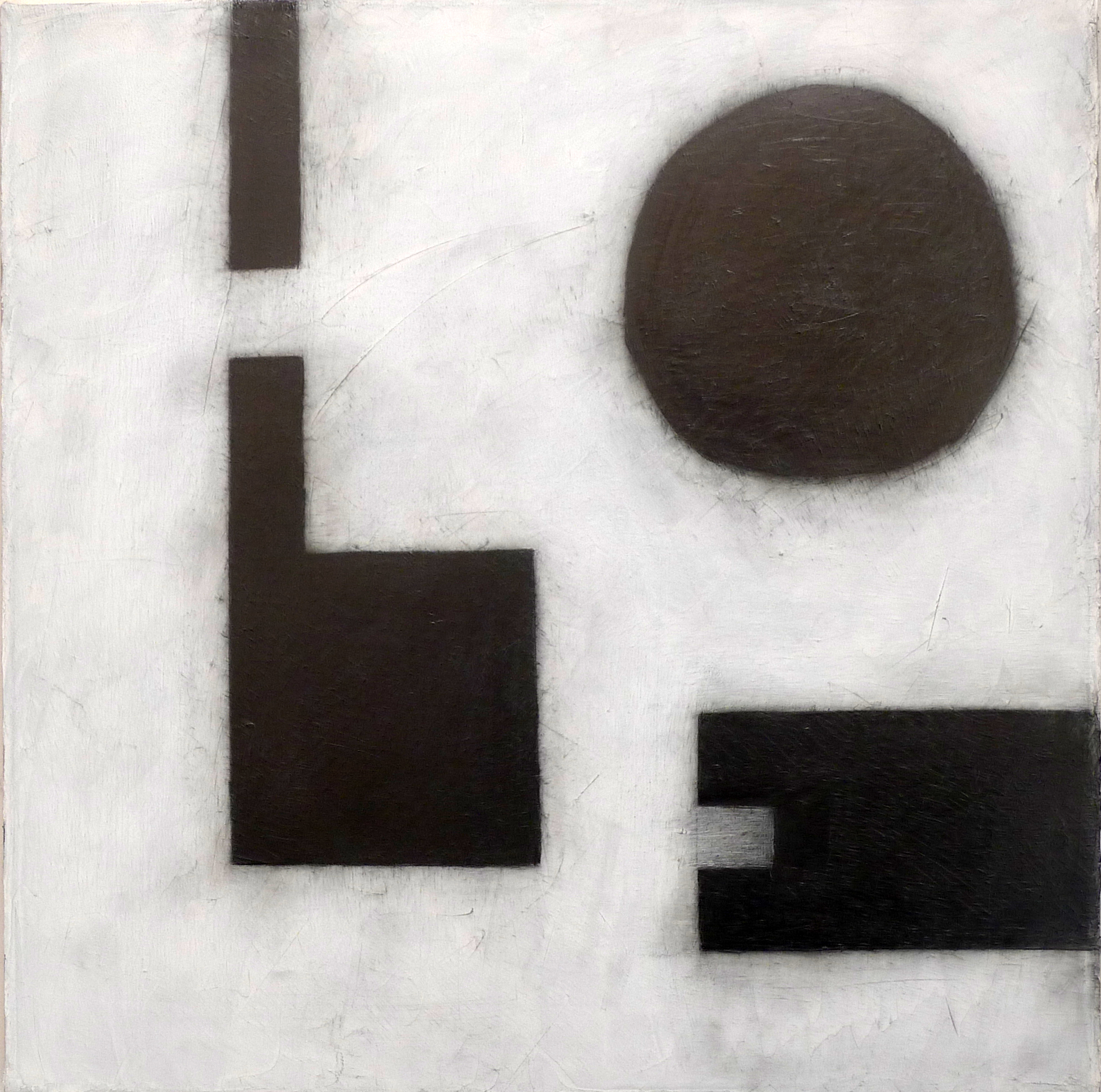
(W)hole, 2013, 28” x 28”, graphite, oil, canvas
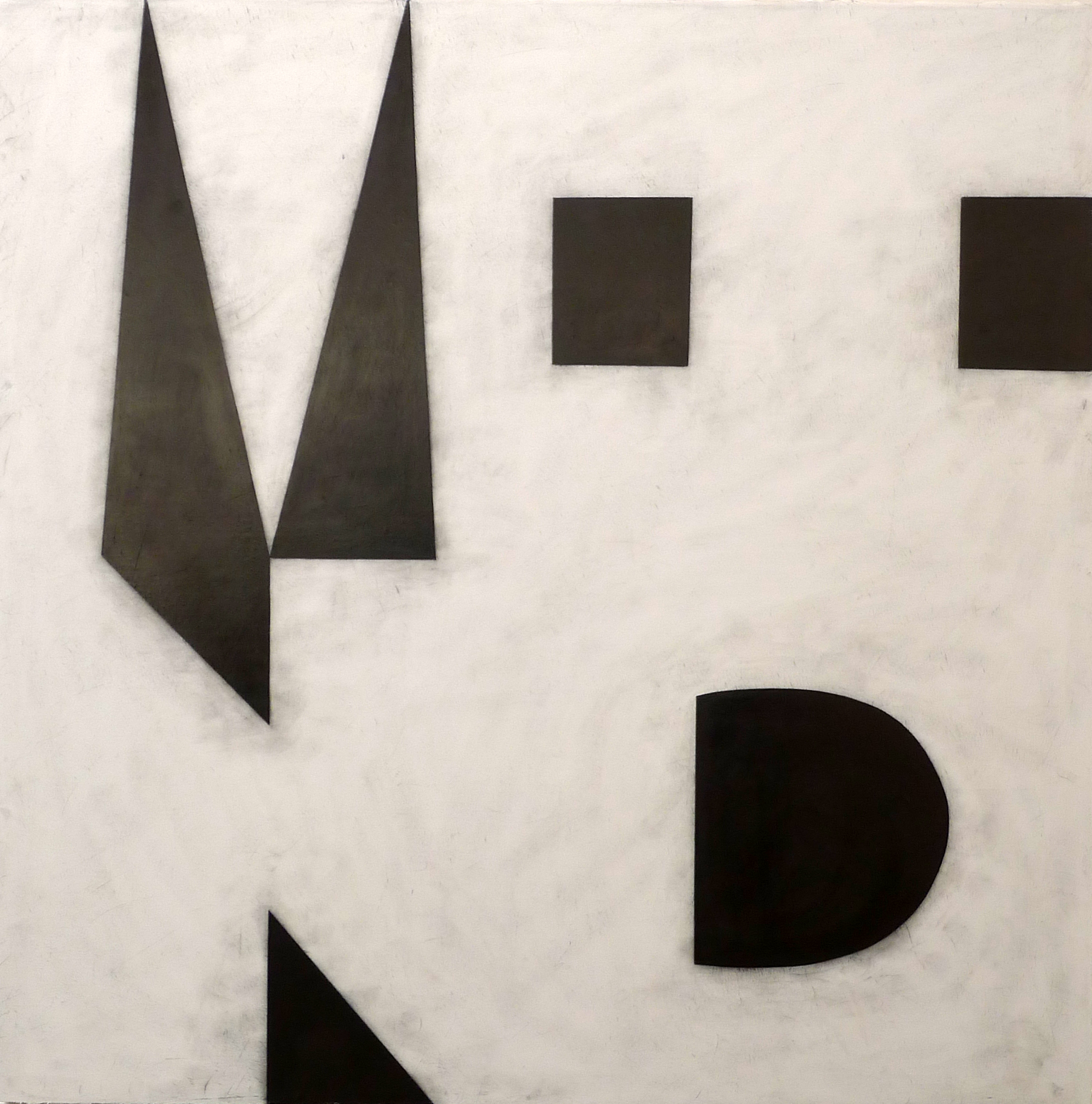
Mind, 2011, 24″ x 24″, graphite, oil, canvas
